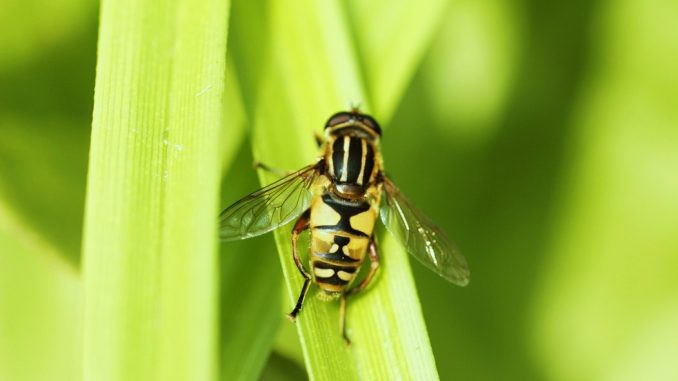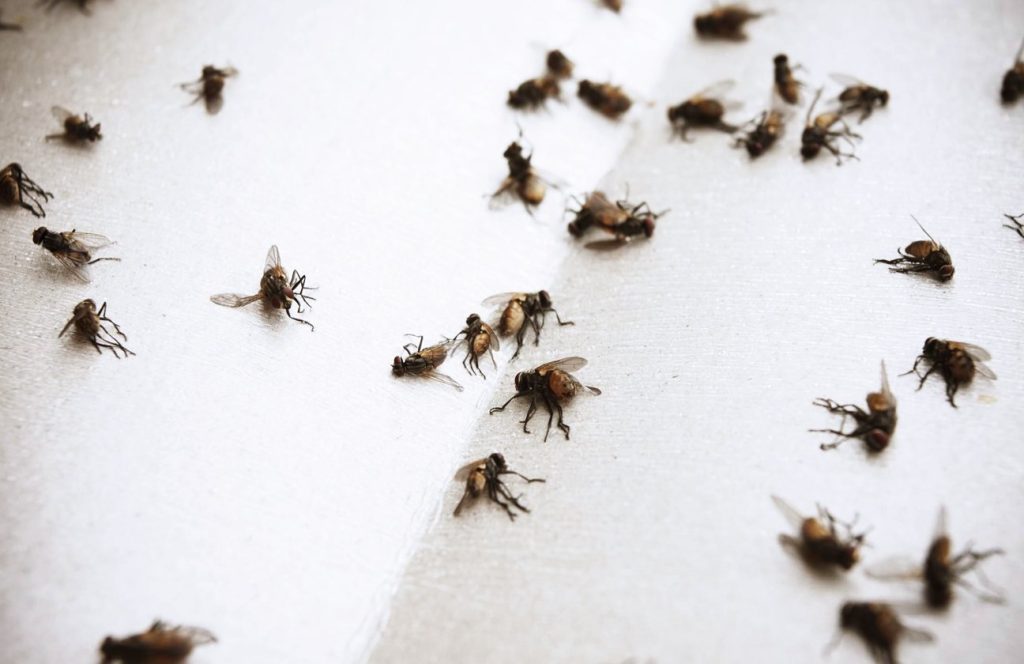
Flies can be quite a nuisance when they invade our living spaces, but fear not! In this comprehensive guide, we will delve into effective fly removal techniques, bid farewell to these pesky insects, and regain control of our homes. Say goodbye to flies and welcome a fly-free environment with our expert tips and strategies. Let’s get started!
Table of Contents
Understanding the Fly Infestation Problem
Flies, those tiny winged insects, are a common presence around the world. While they serve as decomposers in nature, they can become a real headache when they infest our living spaces. More than just an irritation, dealing with fly infestations is necessary to maintain a hygienic atmosphere and safeguard our health. In this thorough tutorial, we’ll go through the many kinds of flies and the things that draw them, assisting you in identifying the source of the issue before diving into practical extermination methods.
Types of Flies
To combat flies effectively, it’s crucial to identify the specific types causing the infestation. House flies, recognizable by their gray thorax and abdomen, often buzz around our kitchens and garbage bins. Fruit flies, on the other hand, are smaller and usually tan or brown, hovering around decaying fruits and sugary substances. Drain flies have a moth-like appearance and breed in damp areas, while blowflies, with their metallic blue or green sheen, are often found near carcasses. Understanding the traits of each type can help you customize your strategy for the best outcomes.
House Flies
One of the most prevalent fly species found close to human habitats are house flies, or Musca domestica as they are known scientifically. They pose a serious risk to public health because they flourish in unhygienic environments and breed there. House flies are known to transmit germs and bacteria that can cause sickness, endangering both human and animal health. Eliminating house fly infestations requires a combination of preventive measures and targeted control methods.
Fruit Flies
Drosophila melanogaster, or fruit flies, are tiny insects that have a great preference for ripe and fermenting fruits. Once they’ve found a breeding location, these pests can quickly spread, making it difficult to control them. Infestations of fruit flies are frequent in kitchens, grocery shops, and restaurants where they can taint food and be very annoying to customers. A proactive approach to sanitation and targeted traps can help manage fruit fly populations effectively.
Drain Flies
Drain flies, scientifically called Psychodidae, are commonly found near moist areas such as drains, sewage systems, and compost piles. They breed in organic matter and are attracted to decaying materials and standing water. Identifying and eliminating the breeding sites is essential to control drain fly infestations. In addition to sanitation practices, homemade traps can assist in reducing their numbers.
Blowflies
Blowflies, or Calliphoridae, are attracted to decaying organic matter, particularly animal carcasses. While they play a vital role in nature’s cleanup crew, they can become problematic when they invade homes and businesses. Proper disposal of animal remains and maintaining clean surroundings can minimize the risk of blowfly infestations.
Factors Attracting Flies
Understanding what attracts flies to our homes is critical for effective control. Flies are drawn to scents and substances that provide feeding and breeding habitats for their larvae. Some common attractants include uncovered food, garbage, pet waste, and stagnant water. Identifying these attractants and eliminating them can significantly reduce fly infestations.
Unsanitary Conditions
Flies thrive in unsanitary environments. Dirty dishes, spilled food, and trash cans with accumulated waste provide ideal breeding sites and attract these insects. The first step in keeping flies out of your home is to keep everything clean and organized.
Overripe Fruits and Sugary Substances
Fruit flies are drawn to overripe fruits and any sugary substances left exposed. Keeping fruits properly stored and cleaning up spills promptly can help prevent fruit fly infestations.
Standing Water
Drain flies and other fly species are attracted to areas with standing water, such as clogged drains, leaky pipes, and outdoor puddles. Fixing leaks and ensuring proper drainage can make your property less appealing to these pests.
Decomposing Organic Matter
Being scavengers, blowflies are drawn to organic matter that is rotting, such as animal corpses or decaying plant debris. Blowflies can be deterred from infesting your surroundings by properly disposing of organic garbage.
Health Risks and Hygiene
Beyond the nuisance they pose, flies can carry and transmit various diseases to humans and animals. These diseases include, among others, cholera, dysentery, and food poisoning. Flies pick up pathogens from contaminated surfaces, animal feces, and decaying matter and transfer them to exposed food items. To safeguard our health and maintain good hygiene, controlling fly populations is of utmost importance.
Diseases Transmitted by Flies
A variety of pathogens, including bacteria, viruses, and protozoa, can be spread by flies. By landing on contaminated surfaces or feeding on infectious materials, flies become agents for spreading these pathogens to new locations.
Impact on Human Health
Fly-borne diseases can have serious effects on human health, especially in populations that are more susceptible to them, like children, the elderly, and people with compromised immune systems. Controlling fly infestations can significantly reduce the risk of contracting such illnesses.

DIY Fly Control Methods
Using your hands to remove flies can be both cost-effective and pleasant. There are various do-it-yourself approaches for controlling fly populations that have proven to be effective.
Fly Traps and Baits
Fly traps and baits can be created using household items. The vinegar and dish soap trap, where a jar is filled with apple cider vinegar and a few drops of dish soap, attracts fruit flies and traps them. A similar approach involves using a plastic bottle, cutting it in half, inverting the top portion, and placing a mixture of sugar water and yeast inside to attract and trap flies.
Fly Repellents
Essential oils with natural fly repellent characteristics include citronella, eucalyptus, and lavender. Flies can be deterred from entering inside places by combining these oils with water and spraying the solution around doorways and windows.
Creating Homemade Fly Traps
Vinegar and Dish Soap Trap for Fruit Flies
To create a vinegar and dish soap trap, follow these steps:
- Select a small jar or bowl with a narrow opening.
- Pour apple cider vinegar into the jar, filling it about one-third of the way.
- Add a few drops of liquid dish soap to the vinegar and mix gently.
- Put some plastic wrap over the jar and fasten it with a rubber band.
- Use a toothpick or a sharp object to poke small holes in the plastic wrap.
The vinegar will attract fruit flies, but the dish soap will break the surface tension, causing the flies to sink and drown.
Yeast-based Trap for Larger Flies
To create a yeast-based trap, follow these steps:
- Take a plastic bottle and cut it in half.
- Invert the top portion into the bottom half, creating a funnel shape.
- In order to activate the yeast, heat a mixture of water, sugar, and yeast.
- Pour the yeast mixture into the bottom half of the bottle.
- Place the top half of the bottle, funnel side down, inside the bottom half.
- Seal any gaps with tape to ensure flies enter through the funnel.
The scent of the yeast will attract larger flies, and once inside, they will be unable to escape.
Professional Fly Control
While DIY solutions can be beneficial for minor fly infestations, major fly infestations may necessitate professional assistance.
When to Seek Expert Assistance
Consider contacting pest control professionals if:
- The fly infestation is extensive and beyond your control.
- DIY methods have not provided satisfactory results.
- The flies are transmitting diseases and posing significant health risks.
Pest Control Methods
Pest control experts have access to various methods to tackle fly infestations. They may use insecticides and baits specifically targeted for fly control. They may also locate and get rid of fly breeding grounds to stop further infestations.
Preventing Future Fly Infestations
The use of preventive measures that deter flies from infiltrating your living spaces is crucial for achieving long-term fly management.
Maintain Cleanliness
Regularly clean surfaces, dispose of garbage properly, and promptly remove pet waste to eliminate potential fly breeding grounds.
Seal Entry Points
Install window screens and door sweeps to prevent flies from entering your home through gaps and openings.
Fix Leaky Pipes
Ensure there are no standing water issues in and around your home by fixing any leaky pipes and addressing drainage problems.
Proper Food Storage
Store food items in sealed containers to prevent attracting flies with exposed food sources.
Fly(Flies) Removal Result
As a result, efficient fly removal necessitates a thorough strategy that takes into account the many fly species, variables that attract them, and effective control techniques. Taking action against fly infestations is crucial for keeping a healthy and comfortable living environment, whether you decide to use DIY traps or hire a professional. You may considerably lower the risk of future fly infestations by following the preventive steps suggested in this manual, and you can say goodbye to those pesky bugs forever.

Fly(Flies) Removal FAQs
Can I use essential oils to naturally ward off flies?
A few essential oils, like citronella, eucalyptus, and peppermint, have the ability to repel flies. These oils can be used as natural fly repellents.
What can I do to keep fruit flies out of my kitchen?
To deter fruit flies, store fruits properly and swiftly clean up spills or overripe fruit.
Are fly swatters effective in controlling flies?
Fly swatters can be useful for dealing with a few flies, but they may not be practical for large infestations. They are more suitable for occasional fly control.
Are fly control methods safe for pets and children?
When using chemical fly control methods, it’s crucial to follow the instructions carefully and keep them out of reach of pets and children. Opting for natural methods can be a safer alternative.
What should I do if the fly infestation persists despite my efforts?
If DIY methods fail to control the infestation, consider seeking professional pest control services for more effective and long-lasting results.

Leave a Reply